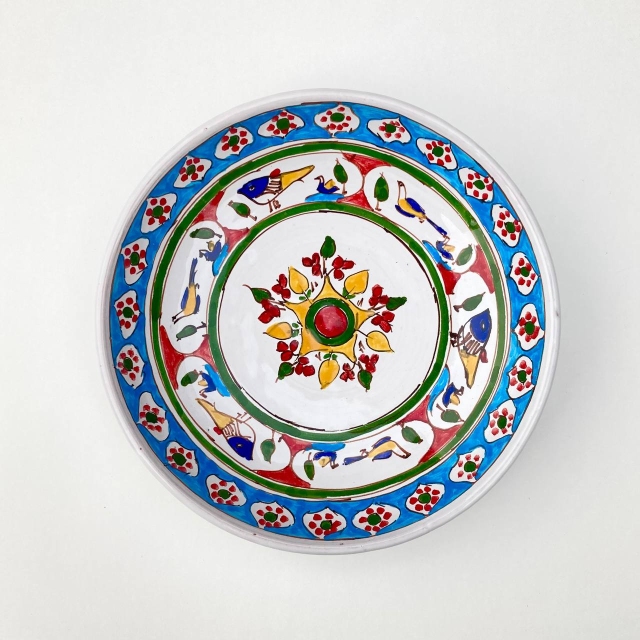Iranian Pottery and Ceramics: A Cohesive Union of Art and Craft
Ceramics derive from the Greek word Keramos, which itself has Sanskrit roots and means “fired clay.” In a broad sense, the science of ceramics is defined as “the study, creation, and application of solid objects whose main components are non-metallic minerals.” Therefore, ceramics can be described as solid objects primarily made from non-metallic mineral materials. These materials are first shaped and then hardened through the application of heat.
Ceramics come in many varieties, including pottery, porcelain, Pyrex, ordinary glass, and more. Because the terms “pottery” and “ceramics” are not always clearly distinguished in common usage, they are sometimes used interchangeably. Pottery, specifically, can be defined as one of the most ancient and basic ceramic products, characterized by a porous body and a distinct color.
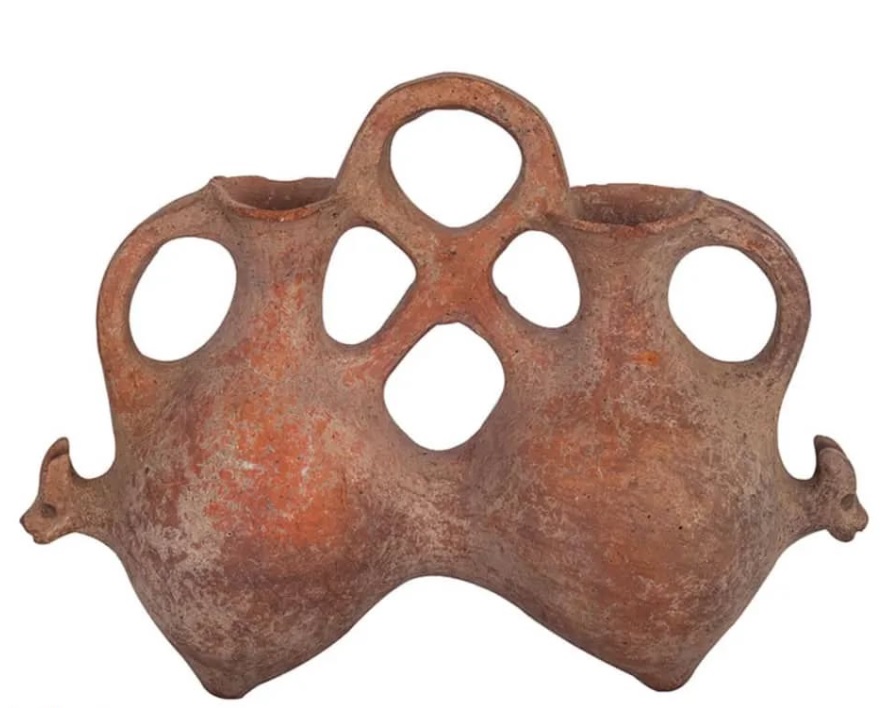
Red-burnished pottery with a sandy mixture, circa 1000 BCE, discovered in Ardabil
History of Pottery in Iran
The exact time when pottery vessels were first made in Iran is unknown. What we know today about the history of Iranian pottery comes from the study of samples unearthed by archaeologists. Finds from Ganj Dareh mound in western Kermanshah and Kamarband Cave near Behshahr in Mazandaran Province indicate that the oldest pottery in Iran dates back to the Neolithic period, around the 8th millennium BCE. Pottery from this era consists of uneven vessels that were not well-fired, and they were frequently blackened due to exposure to smoke. These vessels were unsuitable for holding liquids and were likely used for storing grains and vegetables. Since such pottery has been found both in residential caves and open plains, it provides important evidence of the connection between Iran’s cave-dwelling and early urban communities. Researchers suggest that women in this period may have played a central role, not only tending fires but also inventing and crafting ceramic vessels. Some scholars believe that the idea of pottery emerged from observing how clay around a hearth hardened. Others propose that early humans coated baskets with clay and dried them in the sun to store materials; if the basket was accidentally burned near the hearth, a hard object would remain. This may have been the beginning of ceramic vessel production.
The first inhabitants of the Iranian Plateau, around the 5th millennium BCE, were not only successful in hunting and agriculture but also crafted handmade pottery in black and red for storing food supplies. During this period, the first significant development in pottery occurred: the emergence of decorated pottery. These vessels were uneven and fragile bowls, often with egg-shaped bases, featuring intersecting horizontal and vertical lines as decoration. The most important advancement in pottery was the invention of the potter’s wheel, which researchers estimate emerged around the 4th millennium BCE. The exact location of this invention remains uncertain, but many scholars believe that the inhabitants of Iran’s central plateau were the first in the world to develop the potter’s wheel. Prior to this innovation, pottery was fired using primitive kilns.
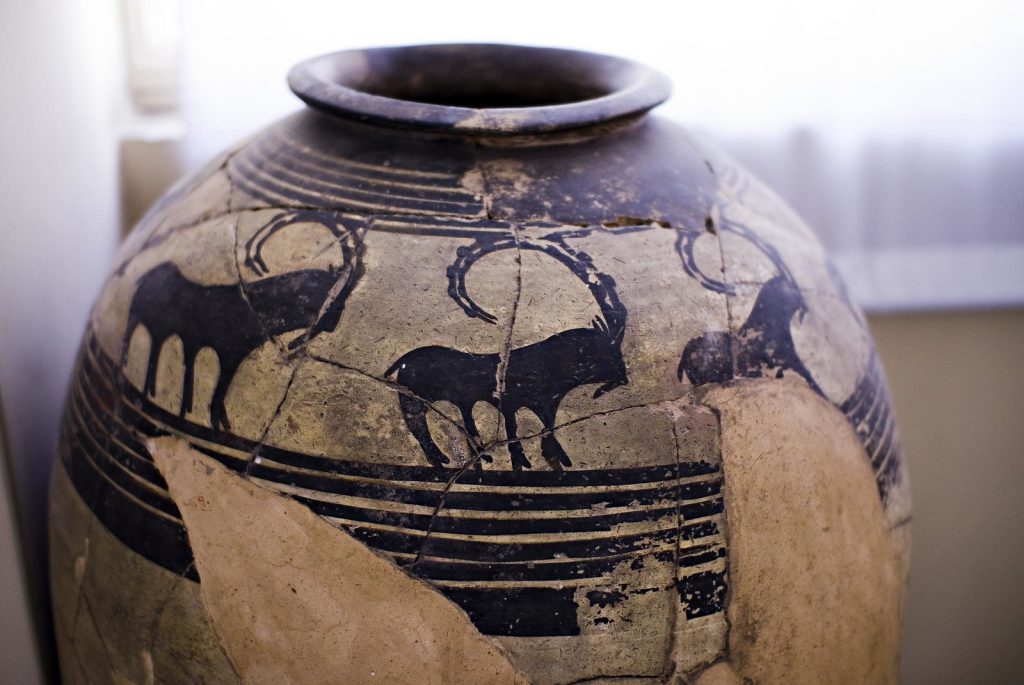
A ceramic vessel dating back to the 4th millennium BCE
Contemporary Pottery in Iran
After the victory of the Islamic Revolution and the implementation of programs restricting the import of foreign goods, traditional pottery centers, as well as industrial tile production factories, became more active. Today, many of their products are exported to neighboring countries. Despite the presence of large-scale ceramic factories worldwide, handcrafted pottery remains highly valued because these pieces reflect the artist's emotions and carry the cultural significance of their respective regions. In Iran, potter-artists continue to create artistic ceramics while preserving cultural authenticity, and numerous exhibitions of their works are held annually. Most cities in Iran host long-standing traditional pottery workshops. These workshops differ from one another in terms of the types of raw clay, glazes, construction methods, shapes, and decorative techniques they use. Typically, they use red clay or white clay mixed with silica powder, kaolin, crushed glass, and bentonite. Traditional workshops generally do not follow a fixed scientific formula for their clay and glazes. However, some potter-artists use industrially produced clay and glaze materials to create higher-quality pieces. By varying the raw materials, the finished pottery achieves different colors, which may be glazed or left unglazed, depending on the artist’s taste or the preferences of clients. In traditional workshops, unglazed or biscuit-fired pieces (clay bodies without glaze) are fired once, whereas glazed pieces are fired twice.
Major Centers of Contemporary Pottery in Iran
a) Lalejin, Hamedan
This region is the most important pottery center in Iran, with numerous workshops engaged in producing ceramic products. One key reason for the prosperity and prevalence of pottery in Lalejin is the availability of high-quality and accessible clay and silica deposits. The clay in this area is so well-suited for pottery that it attracts buyers from all over Iran. Lalejin products are mostly unadorned and are coated with transparent colored glazes, such as turquoise blue, green, and brown.
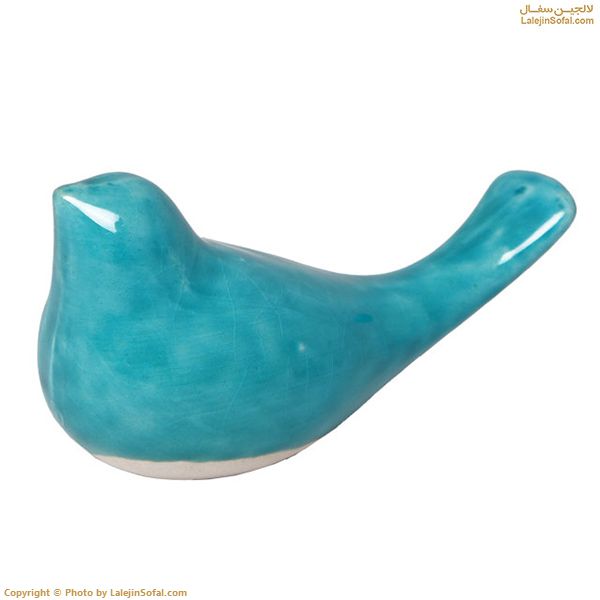
Turquoise Ceramic Bird, a Product of Lalejin Pottery
b) Meybod, Yazd
In this region, Numerous pottery workshops operated side by side, producing a variety of ceramic products. The raw materials used in Clay from Meybod are usually sourced from local deposits, although some workshops also use pre-prepared ceramic materials from industrial factories, resulting in products with a white body. Notable features of Meybod ceramics include designs such as “Khorshid Khanom” motifs, birds, fish, and checkerboard patterns.
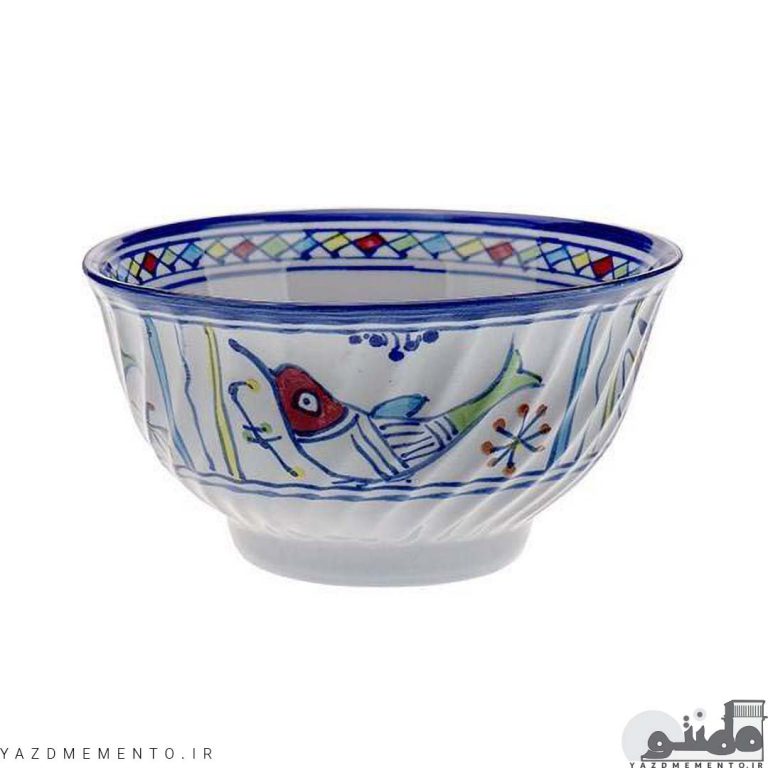
“Khorshid Khanom” Bowl, Workshop Product from Meybod, Yazd
c) Shahreza, Isfahan
In this region, pottery is made using two types of clay: red clay and white clay. The red clay comes from open pits around Shahreza, while the white clay is purchased from other areas. Decoration methods vary across workshops; sometimes the white-bodied pieces are adorned with black floral and plant motifs, fish, and birds under a transparent blue-green glaze or a clear glaze. In other cases, the surface is coated with a layer of black or brown color, and the designs are carved into the body. Overall, all methods of decorating raw pottery are common in this area.

Enamelled Ceramic Wall Hanging, workshop product from Shahreza
d) Mand, Gonabad
The ceramic products of this region are very similar to Meybod. The raw materials used in Yazd pottery, vessel shapes, and decorations indicate the migration of Yazdi potters to this area. The primary materials for the white bodies include flint or white stone, washed clay, and clay for the red bodies from river sediments, to which wind-blown sand is added. The decoration method is also exactly like Meybod pottery: colored oxides are painted onto the body and then covered with a transparent, colorless glaze.
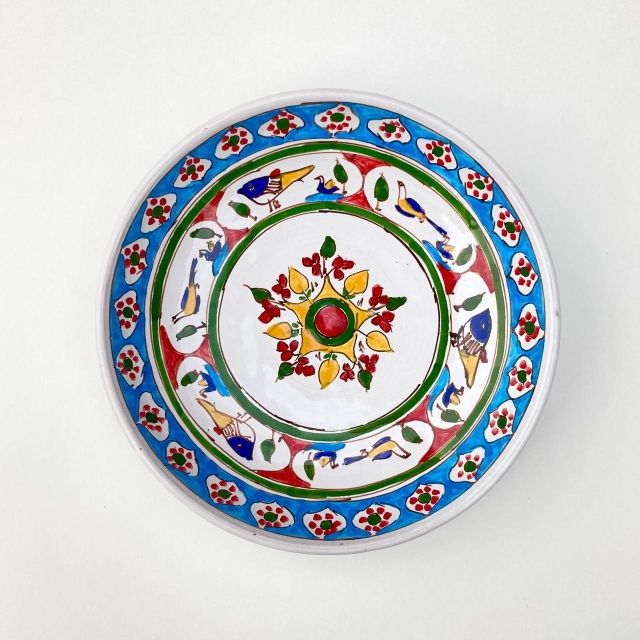
Ceramic Plate, a workshop product from Mand, Gonabad.
Kalporgan, Saravan, Balochistan
Pottery in Kalporgan is made using very basic techniques, as the ceramics are shaped on a primitive wheel resembling early pottery wheels. The clay in this region is white but turns red after firing. Most of the potters are women, while men generally handle auxiliary tasks such as extracting clay from the mines and preparing the pottery paste. Decorations on ceramics from this area consist of very simple geometric and abstract patterns
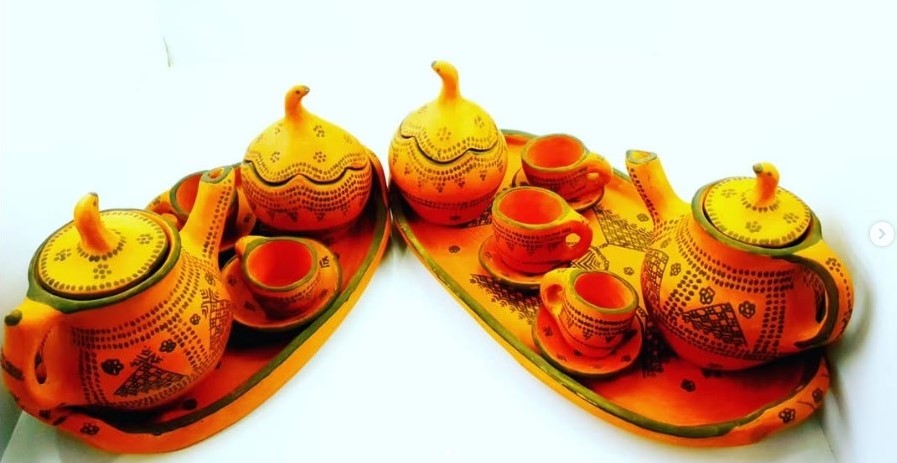
Set of Clay Cups and Teapot, Workshop Product from Kalporgan
Ceramic Products of Zonuz, Tabriz
The ceramics of Zonuz are made from white clay extracted from local mines. The bodies produced from this clay are very white and are sometimes decorated with very simple plant motifs, applied using plastic stamps or brushes. The painted designs are then coated with a transparent, colorless glaze.
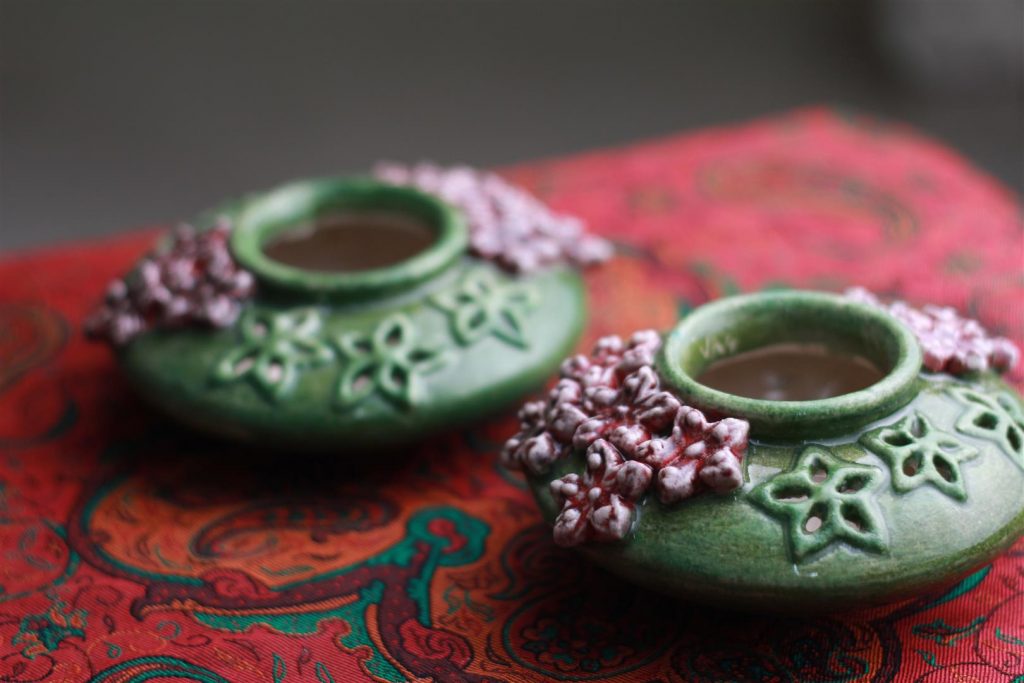
Decorative Ceramic Vessel, Workshop Product from Zonuz
Natanz
In Natanz, only a few pottery workshops are currently active, although in the past, numerous workshops operated in the region. Traditionally, vessels were mostly made using a potter’s wheel. Nowadays, molds are commonly used to shape pottery, and the surfaces are decorated with precise and delicate carvings featuring broken and circular geometric patterns.
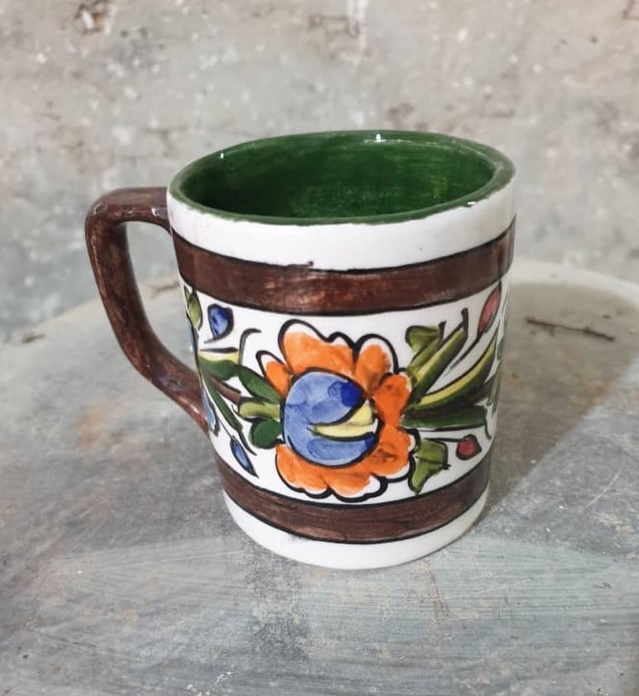
Painted Ceramic Cup, Workshop Product from Natanz
Ceramic Vessels, Workshop Products from Qom
In the pottery workshops of Qom, a variety of ceramic products are produced and offered either unglazed or glazed. The decorations on these pieces are very simple and do not feature distinct motifs. The colored glazes used are mostly green, blue, brown, and lapis lazuli, covering the surfaces of the vessels uniformly.

Painted Ceramic Platter, Plate, and Bowl – Workshop Products from Qom
Siahkal, Gilan
Potters in this region make their ceramics from the locally available red clay. The decoration of the surfaces is done using a lattice technique, where patterns are cut into the semi-dry body. These vessels are usually unglazed, and the body retains its natural red color. Most of the potters in this area are women.

Painted Ceramic Plate, Workshop Product from Siahkal
